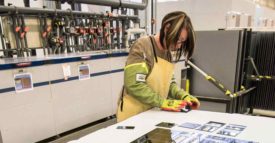Automated Assembly Systems
Screwdriving With Cobots
Labor shortages have forced manufacturers to adopt collaborative technology
February 1, 2023
Robots Assemble Pressure Sensors
High-speed system produces 4 million pressure sensors annually.
January 16, 2023
Automation Shines at First Solar
A highly automated manufacturing process helps first solar compete with cheap imports.
January 8, 2023
Robots Assemble Electric Vehicles
Automakers need to be flexible and adopt new automation.
December 21, 2022
Never miss the latest news and trends driving the manufacturing industry
Stay in the know on the latest assembly trends.
JOIN TODAY!Copyright ©2025. All Rights Reserved BNP Media.
Design, CMS, Hosting & Web Development :: ePublishing












